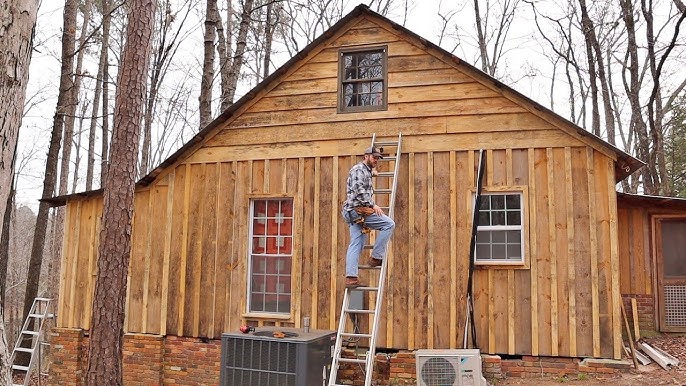RoofCont provides expert roofing, siding and contractor services, specializing in installations, repairs, and replacements for residential and commercial properties.
RoofCont provides expert roofing, siding and contractor services, specializing in installations, repairs, and replacements for residential and commercial properties.

Replacing wood siding is a great way to revitalize the exterior of your home, improve its insulation, and protect it from the elements. While wood siding is known for its natural beauty, over time, it can become damaged or worn. This guide covers the steps needed to remove old or damaged wood siding and replace it effectively, ensuring a beautiful, long-lasting finish for your home.
Begin by inspecting your wood siding to determine the extent of the damage. Look for any signs of rot, mold, or insect damage, and note which sections need to be replaced. Make sure to gather the necessary tools, including a pry bar, hammer, saw, caulk, nails, measuring tape, safety gear, and replacement wood siding that matches the original material. For best results, work on a dry day to minimize moisture exposure.
Carefully use a pry bar or crowbar to remove the damaged wood panels. Start at the bottom edge of each board, gently lifting until the nails loosen, and then remove the entire board. Be cautious to avoid damaging surrounding boards. Dispose of any rotting or broken pieces responsibly. This step requires patience to prevent damage to the underlying structure and surrounding wood siding.
Once you’ve removed the damaged siding, inspect the underlying structure for any hidden issues, such as rot, mold, or water damage. If you find any, address these problems before installing the new siding. Repairing the underlying wall can prevent future issues and increase the lifespan of your new wood siding. You may also want to add a moisture barrier or house wrap for extra protection, as this will help shield your home from moisture and improve energy efficiency.
Use a measuring tape to take accurate measurements of the areas where you’ll be installing new siding. Mark and cut the replacement panels to the correct size with a saw. Leave a small gap, around 1/8 inch, between each board to allow for expansion and contraction due to temperature changes. Be sure to wear safety gloves and goggles while cutting to avoid injuries from wood splinters.
Start by positioning each new wood panel carefully in place, ensuring it lines up with adjacent panels. Nail the siding into the studs, using galvanized nails to prevent rust. For added durability, place nails about 3/4 inch from the edge and space them evenly along the board. Make sure the boards are flush and level, as this will provide a polished, professional appearance.
After installing the new siding, inspect all seams, corners, and edges for any gaps. Apply a weather-resistant caulk along these areas to create a tight seal that prevents moisture from penetrating the siding. Caulking is especially important around doors, windows, and other openings. This step will help your siding resist water damage, improving its durability and maintaining its appearance over time.
For a seamless look, prime and paint the new siding to match the existing panels. Use a high-quality, exterior-grade primer and paint to ensure durability against the elements. Applying two coats of paint will provide added protection, extending the life of your wood siding and enhancing your home’s curb appeal. Be sure to choose paint that is specifically designed for wood and suitable for exterior use.
To keep your wood siding in top condition, inspect it annually for any signs of damage, including rot, cracks, or peeling paint. Clean your siding periodically with a gentle detergent and water to remove dirt and debris. Reapplying paint or stain every few years will also protect the wood and keep your home looking fresh.
Wood siding replacement not only enhances the look of your home but also improves its insulation and durability. While wood siding requires regular maintenance, it provides a natural, timeless look that complements a variety of architectural styles. By following these steps, you can replace damaged wood siding effectively, adding value and curb appeal to your home.

Neque porro est qui dolorem ipsum quia quaed inventor veritatis et quasi architecto var sed efficitur turpis gilla sed sit amet finibus eros. Lorem Ipsum is simply dummy
Ralph edwards
March 20, 2023 at 2:37 pmNeque porro est qui dolorem ipsum quia quaed inventor veritatis et quasi architecto var sed efficitur turpis gilla sed sit amet finibus eros. Lorem Ipsum is simply dummy